
Best Earth Images of the Week - June 1, 2012
Snow-Covered Country
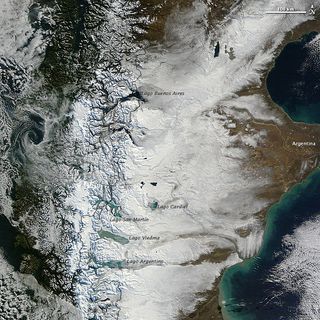
While the Northern Hemisphere is getting ready for the sunny months of summer, the Southern Hemisphere is heading into winter. This seasonal shift can be seen in a NASA satellite image of snow blanketing southern Patagonia
Snow is more common in the Northern Hemisphere than the Southern, but long-term observations have shown that parts of southern Argentina and Chile are likely to see snow in June, according to a NASA statement.
[Full Story: Southern Winter: Snow Covers Patagonia]
Bridge to Nowhere
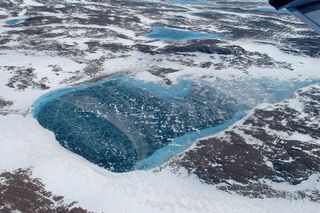
Scientists aboard a recent NASA research flight over Greenland snapped a picture of a sparkling blue pond along the ice-bound island's rugged coastline.
The image was taken on May 7 over Greenland's northeastern coast as part of NASA's Operation IceBridge, a mission that sends flights above both the Arctic and the Antarctic to measure changes in ice and map the bedrock that lies hidden below it.
[Full Story: Stunning Icy Landscape Photographed During NASA Flight]
Frosty Snack
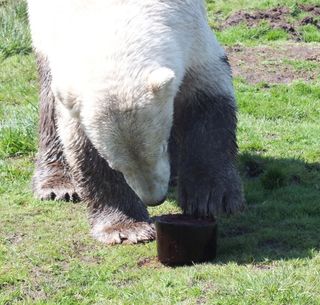
With the arrival of warm weather in the Scottish highlands, the polar bears at the Highland Wildlife Park have been finding ways to beat the heat.
Arktos and Walker, both males, have been alternating between catching some rays and then jumping in their pool to cool off and splash around. Their large 5-acre bachelor pad also means the boys have lots of cool spots to alternate between a bit of sun bathing and then relaxing in the shade.
[Full Story: Polar Bear Pals Enjoy Frozen Treat]
Odd Couple
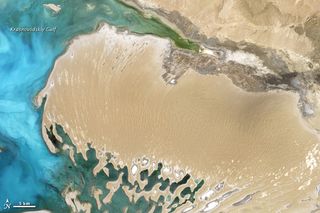
On the western edge of the Asian country of Turkmenistan, a vast desert meets the world's most expansive inland water body, the Caspian Sea.
This natural-color Landsat 7 satellite image, taken on June 16, 2000, shows the sand-covered Dardzha Peninsula sticking out in to the Caspian. The peninsula is a landscape of sand dunes and salt flats that extends from Turkmenistan's Garagum (or Karakum) Desert, which covers most of the country.
[Full Story: Opposites Attract: Where Desert Meets Water]
Rainy Hello
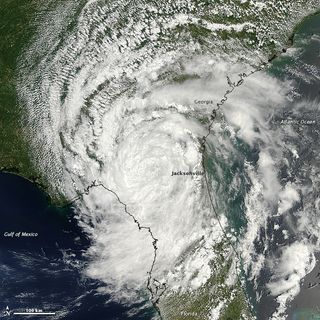
Tropical Depression Beryl has strengthened slightly as it continues to dump rain on parts of the Southeast. A NASA satellite spied the storm over Florida and Georgia on Monday (May 28).
Beryl made landfall as a tropical storm over northern Florida on Sunday with winds of 70 mph (113 kph), it was the strongest tropical storm to make landfall in the United States before the official June 1 start of the hurricane season.
[Full Story: Tropical Depression Beryl Spied by NASA Satellite]
Smoochy Smooch
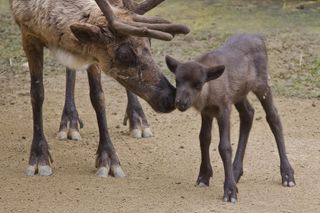
An attentive reindeer mother attends to her 10-day-old calf in this photo taken May 24 at the San Diego Zoo.
The young male is growing everyday and weighs about 15 pounds now, the zoo said in a statement. He shows spurts of energy, but is still a little wobbly on his legs.
The unnamed calf sticks close to his mother and mimics her behaviors, including chewing on solid foods. The calf is still nursing and appears to only be sampling foods like acacia leaves.
[Full Story: Baby Reindeer Born at San Diego Zoo]
Reflection of Light
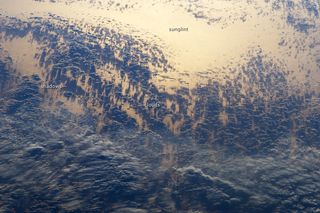
The patterns and shadows of clouds along with the sun's rays reflecting off the Pacific Ocean produced a scene reminiscent of an abstract painting in this photo taken by an astronaut aboard the International Space Station.
The ISS was located over the Andes Mountains of central Chile, looking back towards the Pacific Ocean as the sun was setting in the west (towards the upper right), when this photo was taken on May 15.
[Full Story: Earth as Art: Clouds Shadows & Sunglint]
Sign up for the Live Science daily newsletter now
Get the world’s most fascinating discoveries delivered straight to your inbox.
Wascally Wabbit
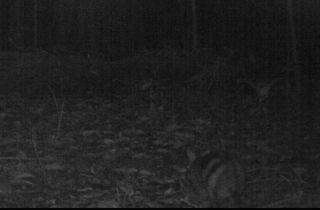
An elusive striped rabbit that has rarely been photographed has been caught on film deep in the forests of Sumatra, thanks to camera traps set up in an isolated mountain region of the Indonesian island.
The Sumatra striped rabbit is not only extremely rare, it is also extremely shy, emerging from hiding only under the cover of darkness. The secretive, nocturnal creatures were snapped scooting across the crowded forest floor in two national parks in 2011.
[Full Story: Rare & Secretive Striped Rabbit Caught on Camera]
Unlikely Link
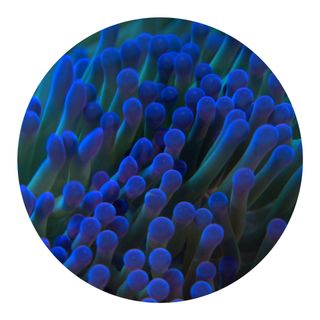
On a Thursday evening, under the dome at the Hayden Planetarium, a crowd of people turned their gaze upward to watch the world premiere of a film made to mark the transit of Venus, a celestial event that won't happen again for more than 100 years.
On June 5, Venus will stray between our own planet and the sun, appearing as a black dot marching across the face of our nearest star. The next transit happens in 2117.
[Full Story: Venus Transit Inspires Dazzling Film With Surprising Star]










